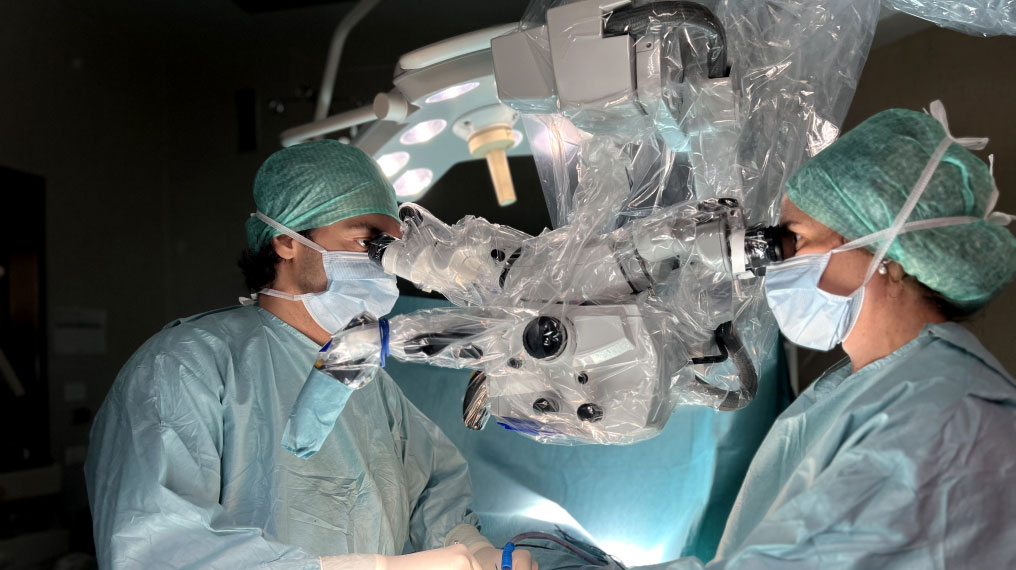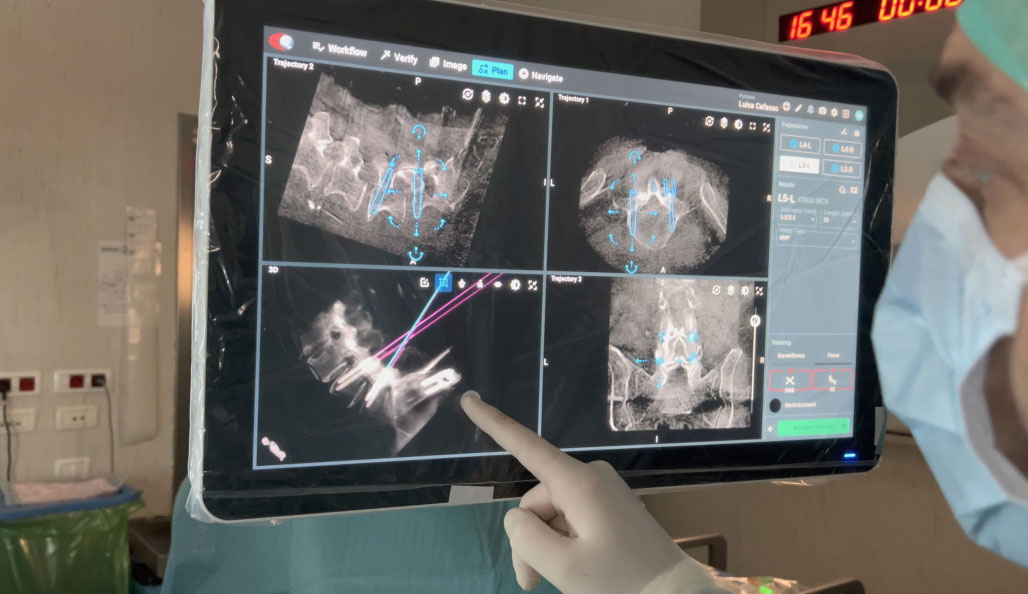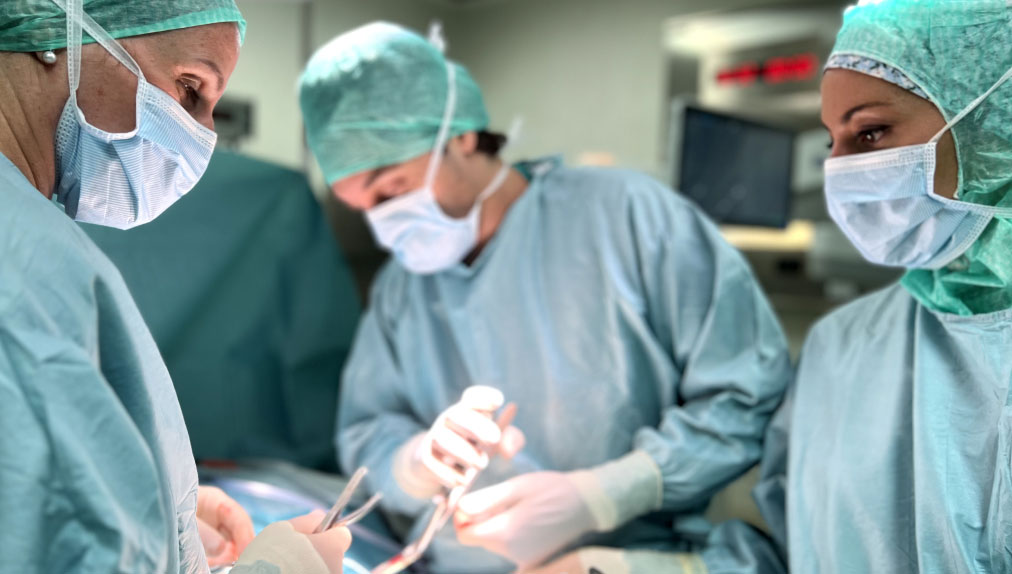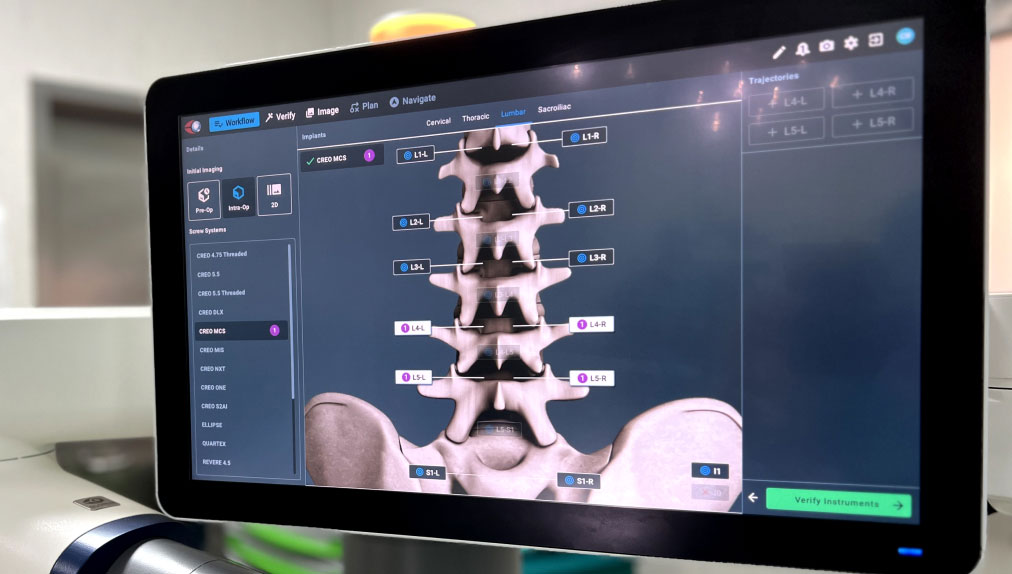
Robotic-Assisted Surgery
A unique, innovative and revolutionary approach
Accuracy and precision are the words that best describe the EXCELSIUS GPS robotic system. Our Center boasts one of the most extensive case series of procedures performed worldwide.

How EXCELSIUS GPS works
The robot operates with millimetric precision according to the pre-operative settings programmed by the neurosurgeon. An integrated navigation system allows real-time visualization of surgical maneuvers, drastically reducing the margin of error.
Indicated Conditions
Disc herniation with associated discopathy, lumbar stenosis, vertebral fractures, spondylolisthesis, and vertebral instability are some of the conditions treatable with EXCELSIUS GPS. The robot’s precise accuracy ensures excellent results for procedures requiring the placement of intra-vertebral screws with a minimally invasive approach.


Advantages of
Robotic Surgery
We guarantee maximum accuracy and non-invasive treatments that protect patient health and accelerate recovery times. The procedures are performed percutaneously, with minimal incisions, resulting in reduced pain and post-operative hospitalization.
Recovery time
after surgery
The duration of the surgery, blood loss, and intra-operative X-ray exposure are drastically reduced, as well as hospitalization times. The resumption of daily, work, and sports activities is significantly accelerated.

Training and dissemination
We are the first training center for Europe and the Middle East. To date, we have treated over 1,000 cases with the robotic-assisted technique. The initial results were published in 2019 in the international scientific journal, Journal of Robotic Surgery.
